When light passes through two polaroids P1andP2, then transmitted polarisation is the component parallel to the polaroid axis.
Which of the following is correct?
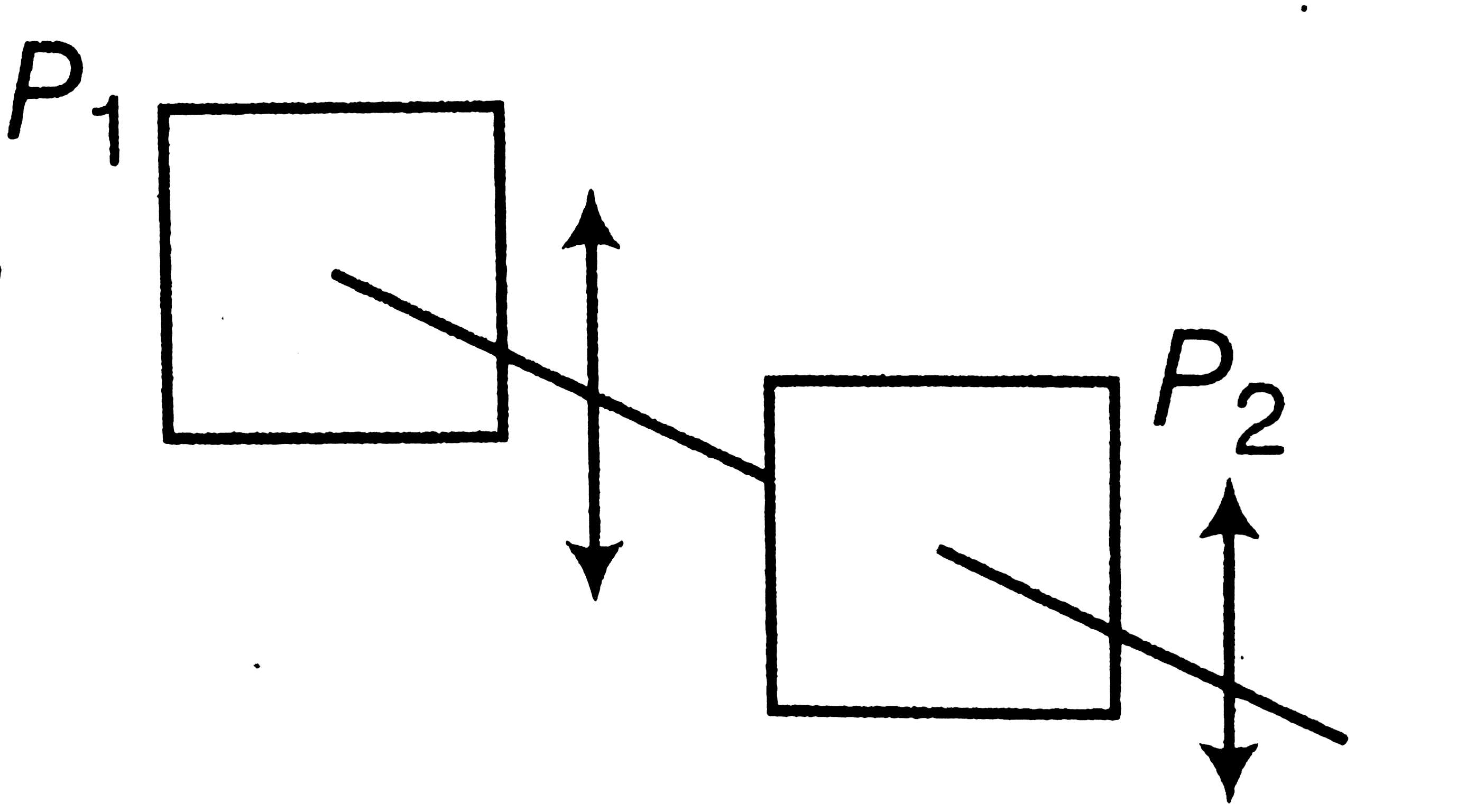
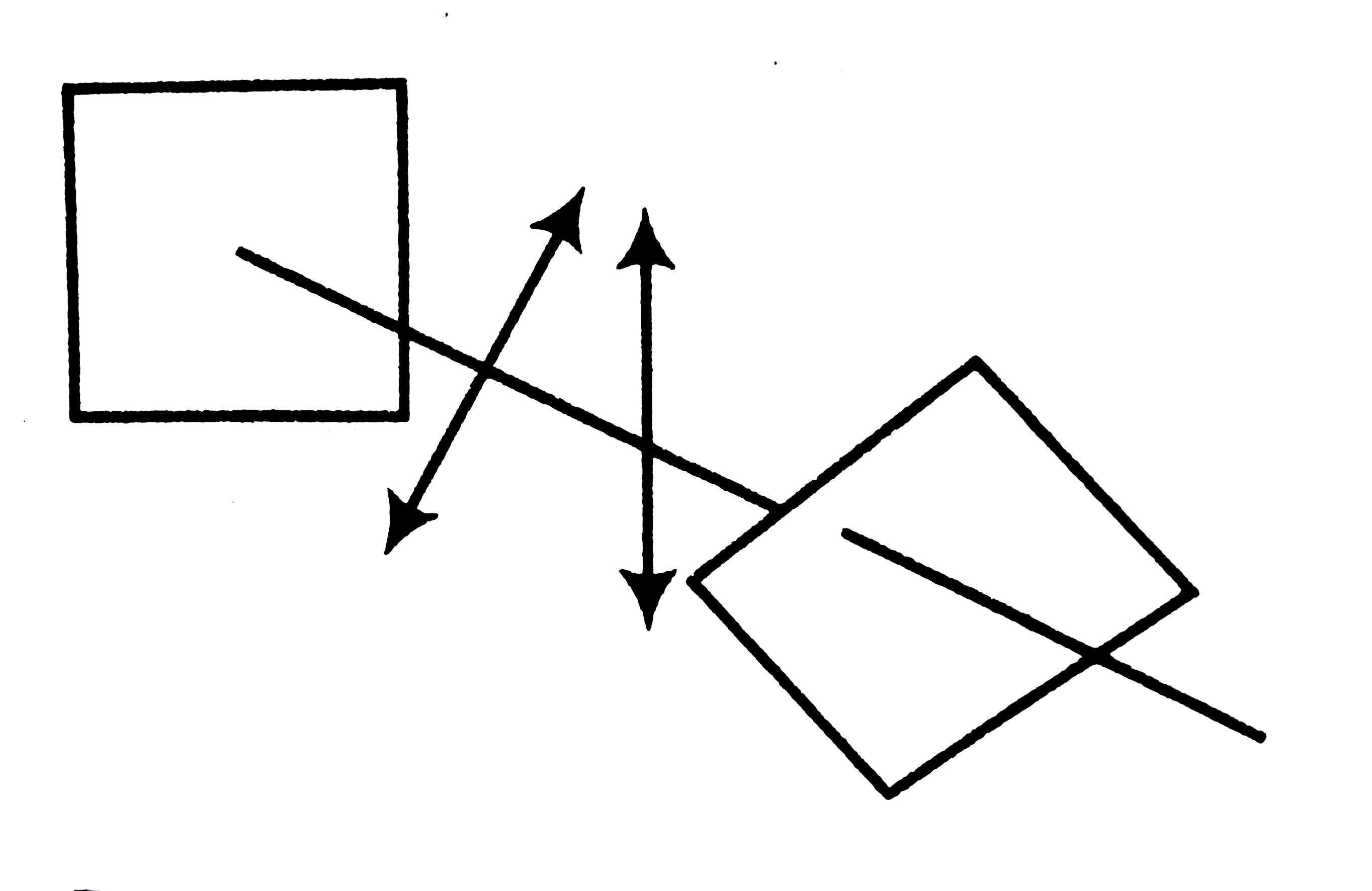
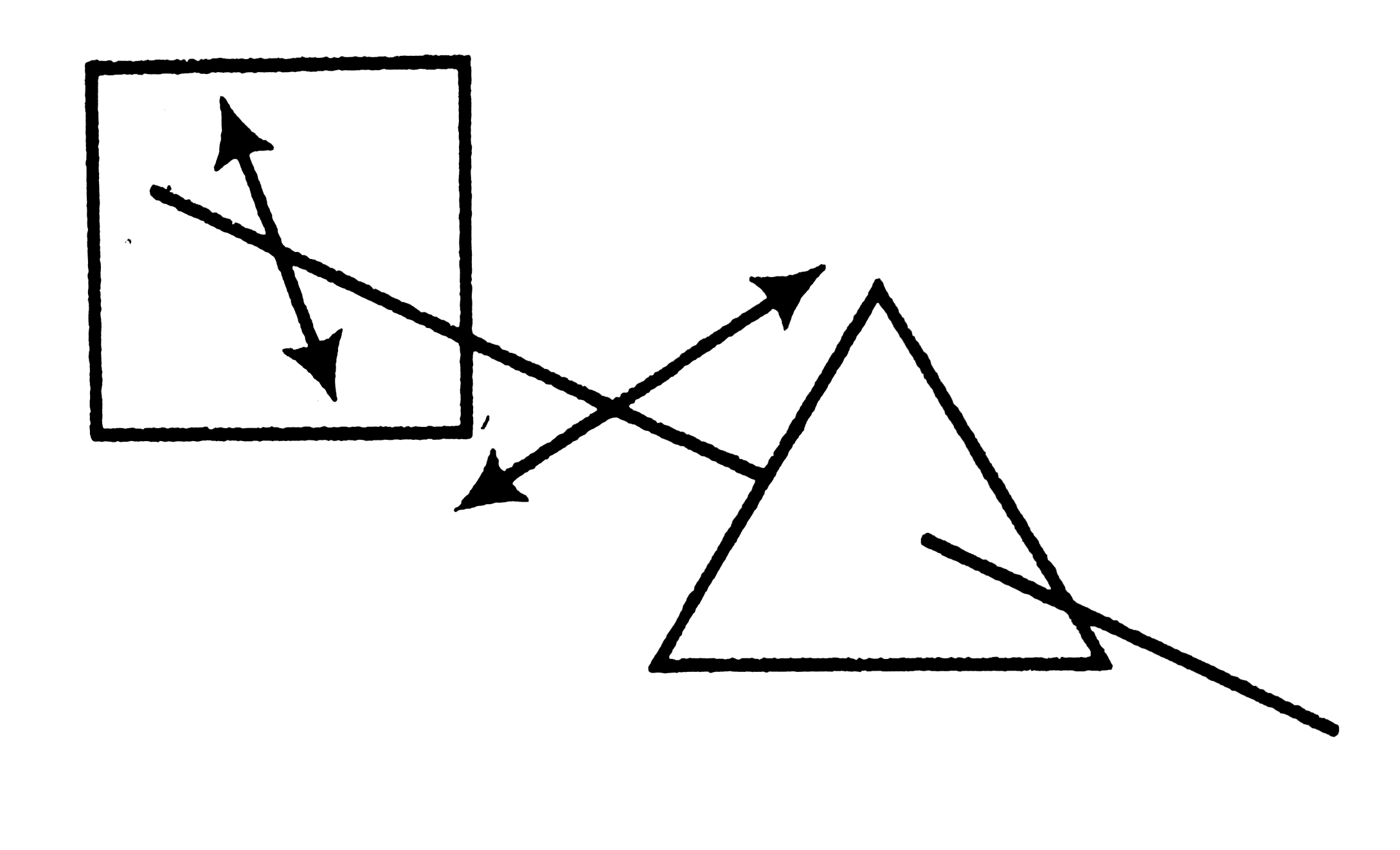
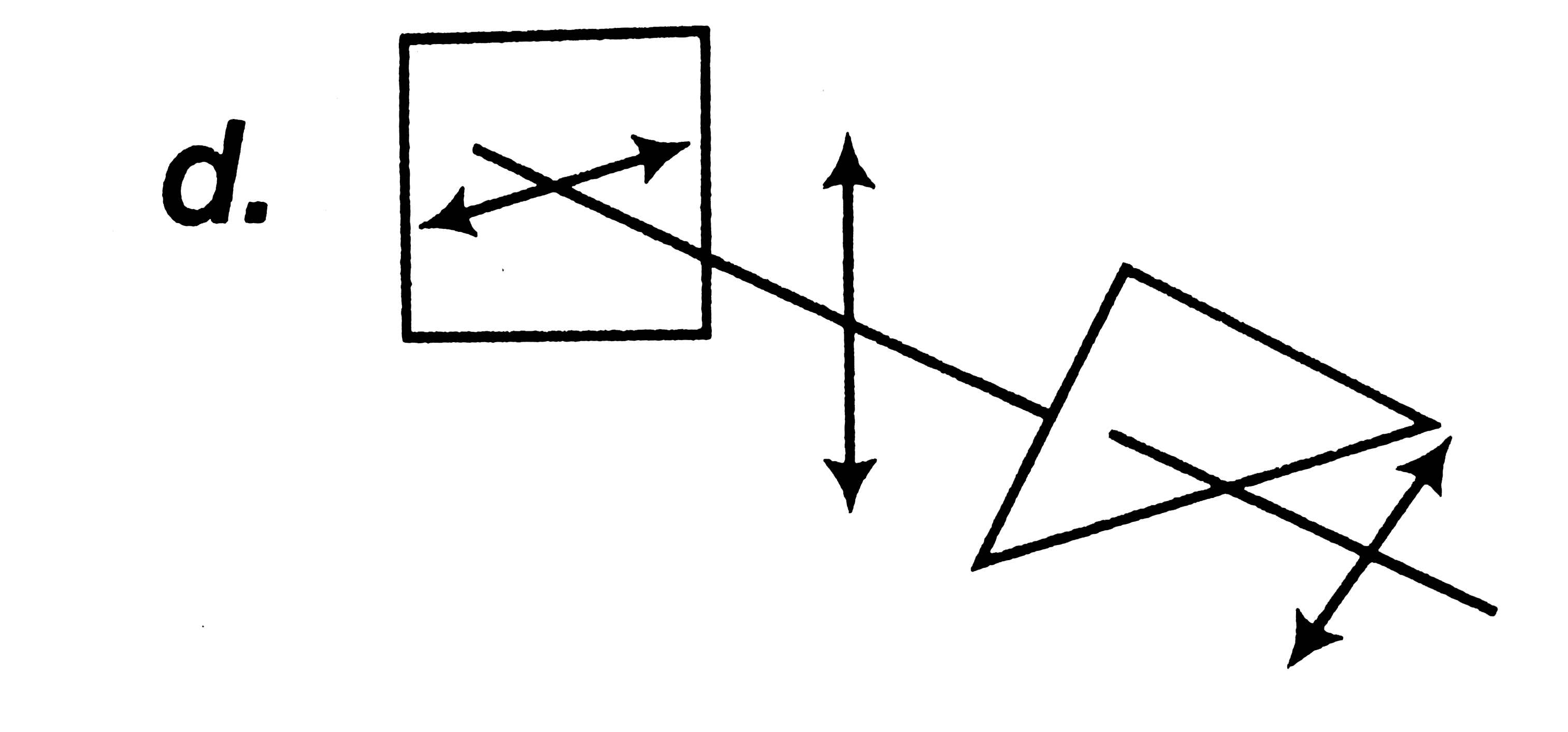
The correct Answer is:A
If the light from an ordinary source (like a sodium lamp) passes through a polaroid sheet P1. It is observed that its intensity is reduced by half. Rotating P1 has no effect on the transmitted beam and transmitted intensity remains constant. Now, let an identical piece of polaroid P2 be placed before P1. As expected the light from the lamp is reduced in intensity on passing through P2 alone. But now rotating P1 has a dramatic effect on the light coming from P2. In one position, the intensity transmitted by P2 followed by P1 is nearly zero. When turned by 90∘ from this position, P1 transmits nearly the full intensity emerging from P2 as shown in figure.

Topper's Solved these Questions
- WAVE THEORY OF LIGHT BOOK - MHTCET PREVIOUS YEAR PAPERS AND PRACTICE PAPERSCHAPTER - WAVE THEORY OF LIGHT EXERCISE - EXERCISE 2 (Miscellaneous Problems)
18 Videos
- WAVE THEORY OF LIGHT BOOK - MHTCET PREVIOUS YEAR PAPERS AND PRACTICE PAPERSCHAPTER - WAVE THEORY OF LIGHT EXERCISE - MHT CET CORNER
4 Videos
- WAVE THEORY OF LIGHT BOOK - MHTCET PREVIOUS YEAR PAPERS AND PRACTICE PAPERSCHAPTER - WAVE THEORY OF LIGHT EXERCISE - MHT CET CORNER
4 Videos
- WAVE MOTIONBOOK - MHTCET PREVIOUS YEAR PAPERS AND PRACTICE PAPERSCHAPTER - WAVE MOTIONEXERCISE - MHT CET CORNER
23 Videos
Similar Questions
Unpolarized light is intensity I0 passes through two polaroids P1 and P2 such that pass axis of P2 makes an angle θ with the pass axis of P1. A third polaroid P3 is placed between P1 and P2 with pass axis of P3 making an angle β with that of P1. If I1,I2,I3 represent intensities of light trnasmitted by P1,P2,P3, determine the values of angle θ and β for which I1=I2=I3.
View SolutionLight from an ordinary source (say a sodium lamp) is passed through a polaroid sheet P1. The transmitted light is then made to pass through a second polaroid sheet P2 which can be rotated so that the angle θ between the two polaroid sheets varies from 0∘ to 90∘. Show graphically the variation of intensity of light transmitted by P1 and P2 as a function of angle θ. Take incident beam intensity I0. Why does light from clear blue portion of sky show a rise and fall of intensity when viewed through a polaroid which is rotated ?
View Solution
Knowledge Check
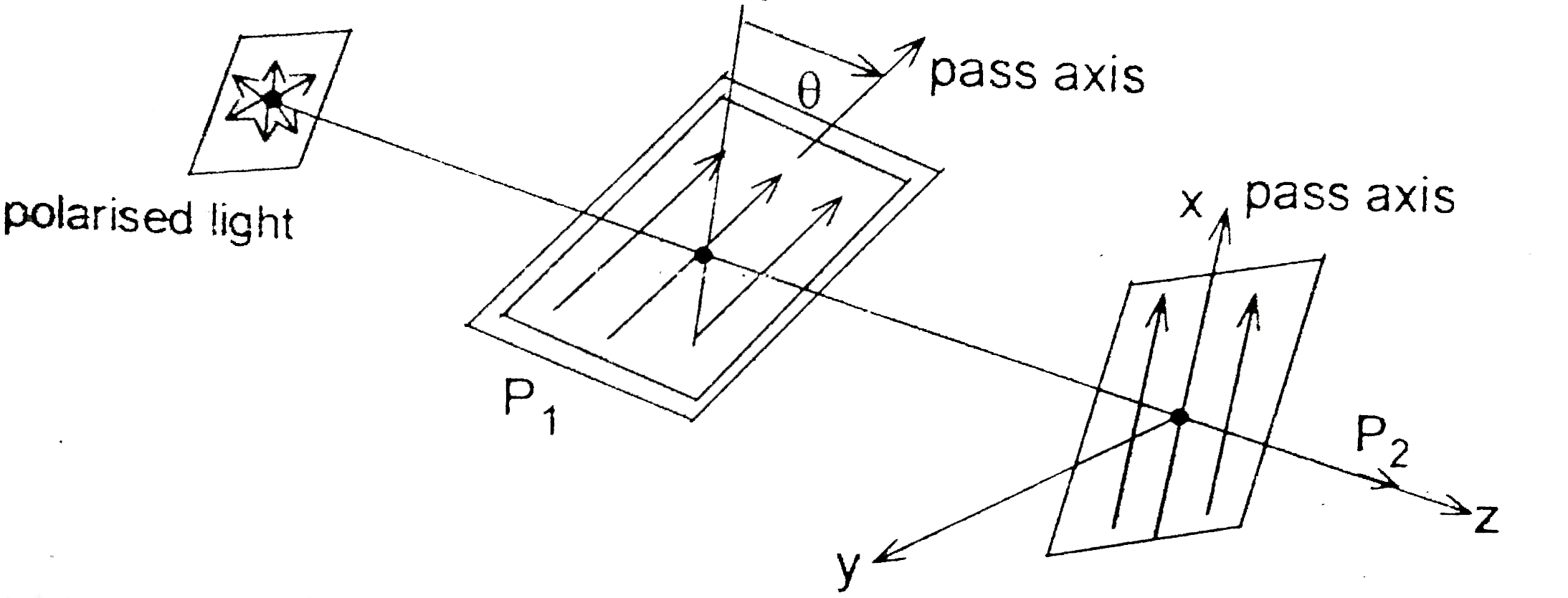
If a polarised light of intensity l0/2 is passed through two polariods P1 and P2 as shown in figure. Then the intensity of light observed by an observer on other side of P2 (if the polaroid P1 is rotated clockwise) as a funtion of angle θ.A B
B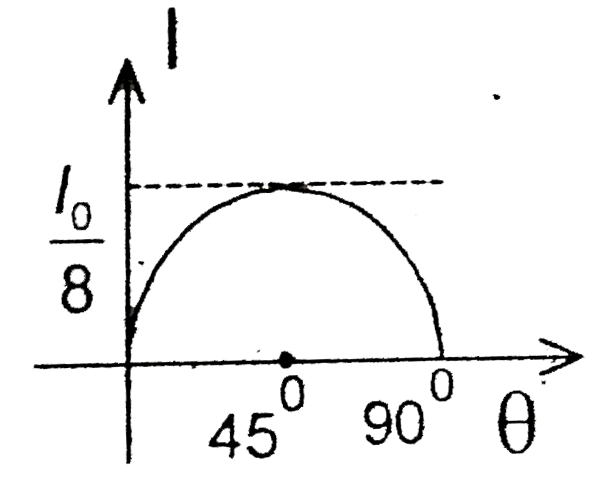 C
C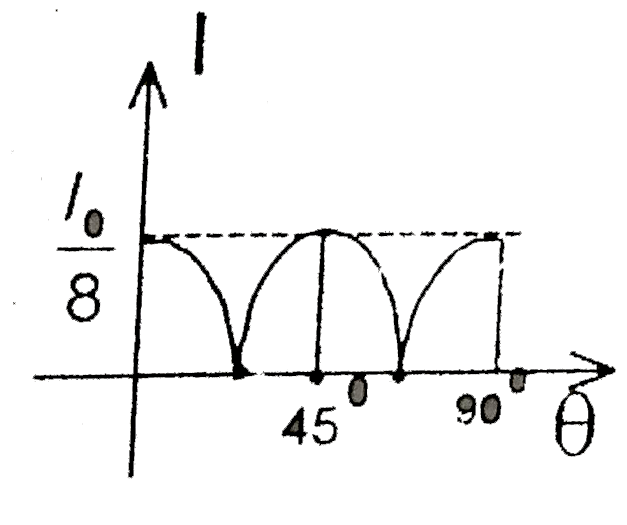 D
D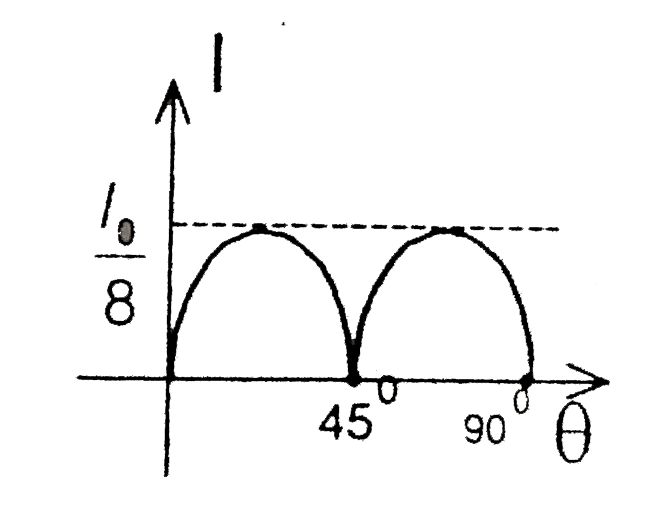
Light waves are electromagnetic waves and hence transverse in nature. The electric field in a light wave propagating in free space is perpendicular to the direction of propagation. But there are infinite number of directions perpendicular to the direction of propagation. but there are infinite number of directions perpendicular to the direction of propagation of light. for example if light propagates along x-axis, the electric field may be along y-axis or along the z-axis or along any direction in y-z plane in the ordinary light. However, if electric field →E remains parallel to a fixed direction (say y-axis) then such light is called linearly polarised light.
There are several methods to produce polarised light from the unpolarised light. now-a-days polaroid sheets are commonly used to produce linearly polarised light. a polaroid has long chain of hydrocarbons which become conducting at optical frequencies. when light falls normally on the polaroid sheet, the →E parallel to the chains is absorbed in setting up electric currents in the chains but →E perpendicular to the chain gets transmitted. so, light on passing through the polaroid i.e., the transmitted light become linearly polarised with →E parallel to the transission (pass) axis of polaroid.
If linearly polarised light of intensity 'I' is incident on another polaroid whose pass axis is inclined at an angle θ from pass axis of first polaroid (or transmission axis of →E of linearly polarised light) the intensity of transmitted light It is given as:
It=Icos2θ.
Q. Two polaroids P1andP2 are set with their pass axis inclined at an angle 30∘. if I0 be the light incident on P1, what is the intensity of light transmitted through P2 ?
View Solution
If a polarised light of intensity l0/2 is passed through two polariods P1 and P2 as shown in figure. Then the intensity of light observed by an observer on other side of P2 (if the polaroid P1 is rotated clockwise) as a funtion of angle θ.
View SolutionUnpolarised light is passed through a polaroid P1. When this polarised beam passes through another polaroid P2 and if the pass axis of P2 makes angle θ with the pass axis of P1, the write the expression for the polarised beam passing through P2. Draw a plot showing the variation of intensity when θ varies from 0 to 2π.
View SolutionExplain, with the help of a diagram, how plane polarised light can be produced by scattering of light from the Sun.
Two polaroids P1andP2 are placed with their pass axes perpendicular to each other. Unpolarised light of intensity I is incident on P1. a third polaroid P3 is kept between P1andP2 such that its pass axis makes an angle of 45∘ with that of P1. calculate the intensity of light transmitted through P1,P2andP3.
View SolutionUnpolarised light of intensity I0 passes through two polaroids P1andP2 such that pass axis of P1. A third polaroid P3 is placed between P1andP2 with pass axis of P3 making an angle 60∘ with that of P1. Determine the intensities of light transmitted by P1,P2andP3.
View Solution(a) Using the phenomenon of polarization, show, how, transverse nature of light can be demonstrated.
(b) Two polaroids P1andP2 are placed with their pass axes perpendicular to each other. Unpolarised light of intensity 10 is incident on P1. A third polaroid P3 is kept in between P1andP2 such that its pass axis makes an angle of 30∘ with that of P1. Determine the intensity transmitted through P1,P2andP3.
View Solution(a) Using the phenomenon of polarization, show, how, transverse nature of light can be demonstrated.
(b) Two polaroids P1andP2 are placed with their pass axes perpendicular to each other. Unpolarised light of intensity 10 is incident on P1. A third polaroid P3 is kept in between P1andP2 such that its pass axis makes an angle of 30∘ with that of P1. Determine the intensity transmitted through P1,P2andP3.
View Solution
